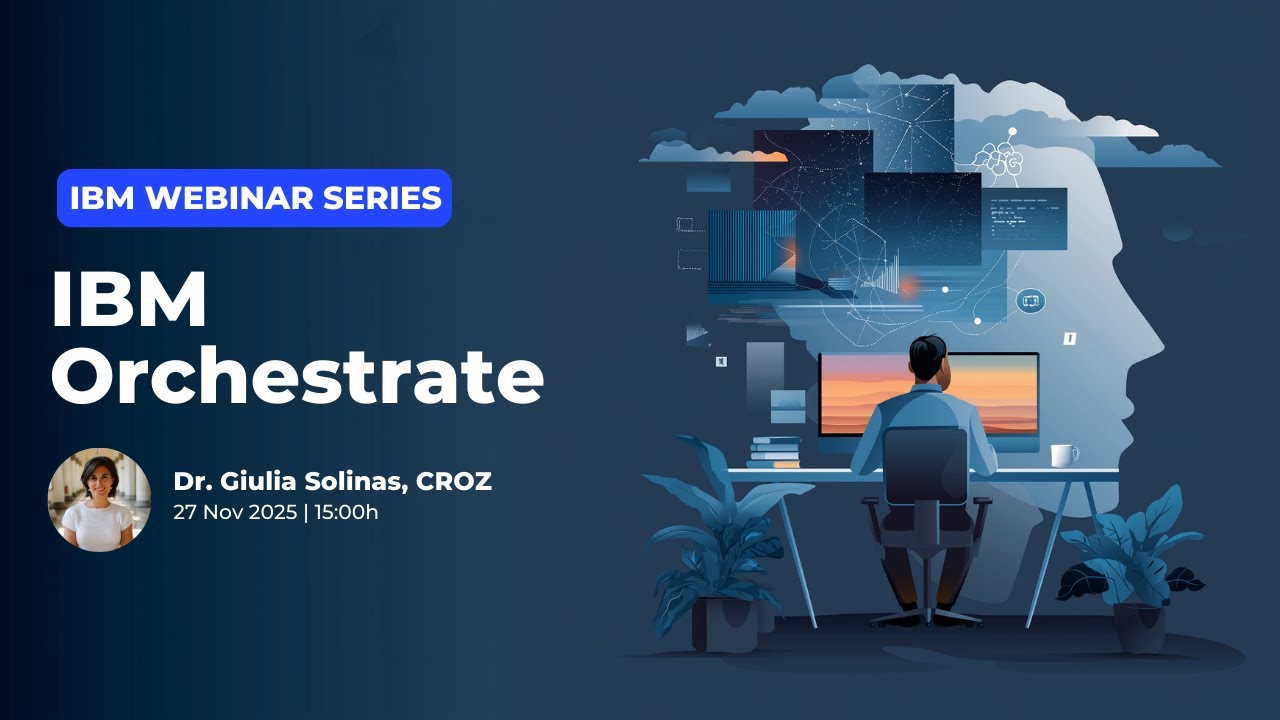Our last session of the CROZ IBM Webinar Series took us deep into the rapidly evolving landscape of agentic AI. Led by Dr. Giulia Solinas, Data Science and AI Consultant at CROZ, the webinar focused on IBM Orchestrate, an enterprise-grade platform for building, governing, and scaling AI agents that automate complex, multi-step business workflows.
Drawing from her experience in AI, statistics, and innovation, Giulia explained how organizations can safely introduce autonomous AI capabilities into their operations, incrementally increase autonomy levels, and use agent collaboration to achieve measurable value. Her session combined theory, platform architecture, practical examples, and a live demo of IBM Orchestrate in action.
Check the full webinar here:
Highlights from the Webinar
From Traditional Automation to Agentic AI
Giulia explained how AI is moving beyond simple models and chatbots to autonomous agents that can perceive, reason, plan, and act across systems. She framed this shift using the “think–act–observe” loop and an autonomy spectrum that lets organizations gradually increase how independently agents operate.
Delivering ROI with the Right Use Cases
The session emphasized starting with use cases tied to revenue, cost reduction, or risk, then building a “control tower” to orchestrate agents and design collaboration between humans and AI. This structured approach helps avoid scattered pilots and supports scalable value.
IBM Orchestrate as an Enterprise Agent Platform
Giulia introduced IBM Orchestrate as a central platform for agent strategy, interoperability, standardization, and security. It supports hybrid deployments and provides building blocks such as an agent catalog, tools integration, no-code builder, and a pro-code Agent Development Kit for more advanced scenarios.
No-Code and Pro-Code Agent Design
Business users can assemble agents through a no-code interface, selecting models, tools, and connections, while developers use pro-code tools to build custom agents, integrate with CI/CD, and implement more complex logic. This combination lets organizations innovate quickly without sacrificing engineering quality.
Governance, Monitoring, and AgentOps
A key part of the webinar was how Orchestrate addresses risk, compliance, and transparency. Built-in governance and AgentOps capabilities allow teams to evaluate agents, monitor performance and tool usage, track costs and latency, and publish only well-tested agents into the enterprise catalog.
The session concluded with a live demo of IBM Orchestrate that walked through the core capabilities of the platform: designing agents, connecting tools, orchestrating multi-step workflows, and managing them in production. Giulia showed how users can trigger complex, end-to-end journeys with simple inputs while the platform handles planning, execution, and collaboration between agents behind the scenes. The demo also highlighted how teams use built-in monitoring, observability, and governance features to inspect traces, measure performance, and refine agents over time, followed by a Q&A.




